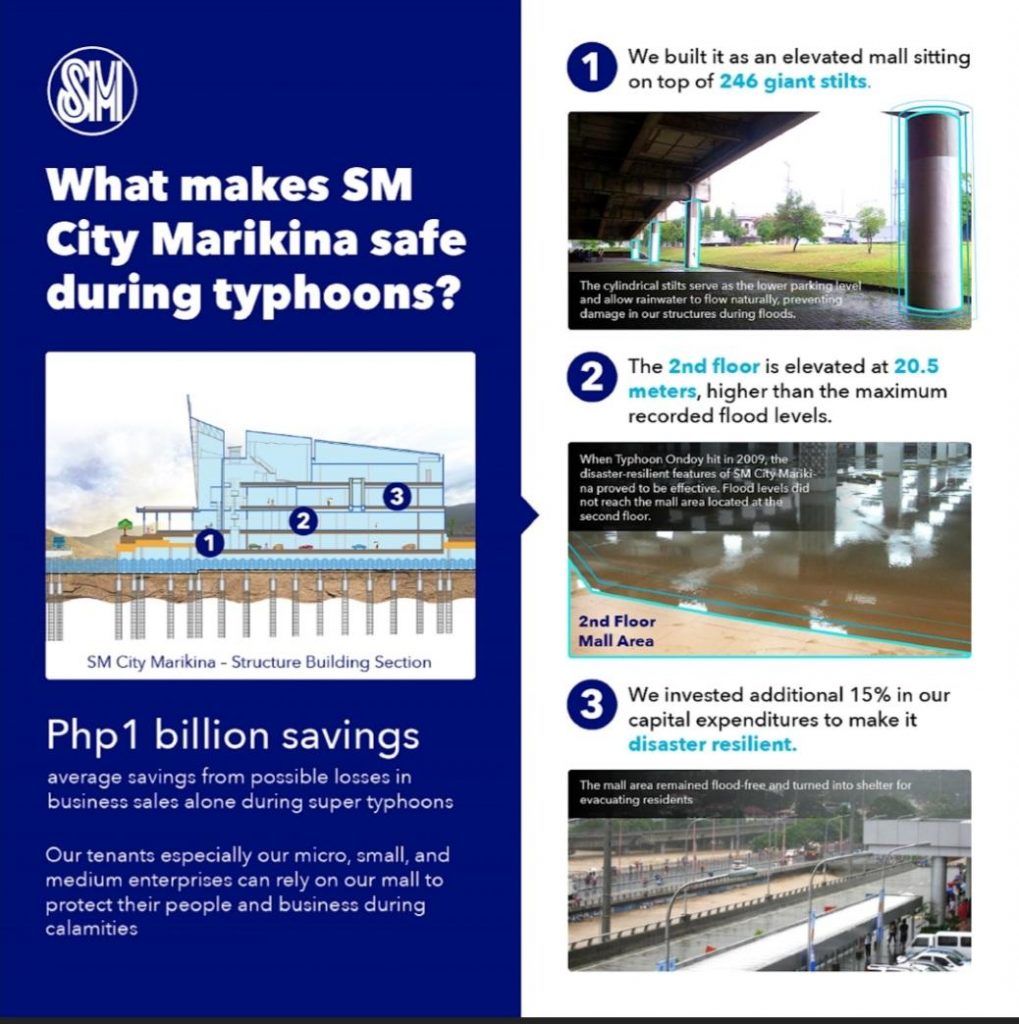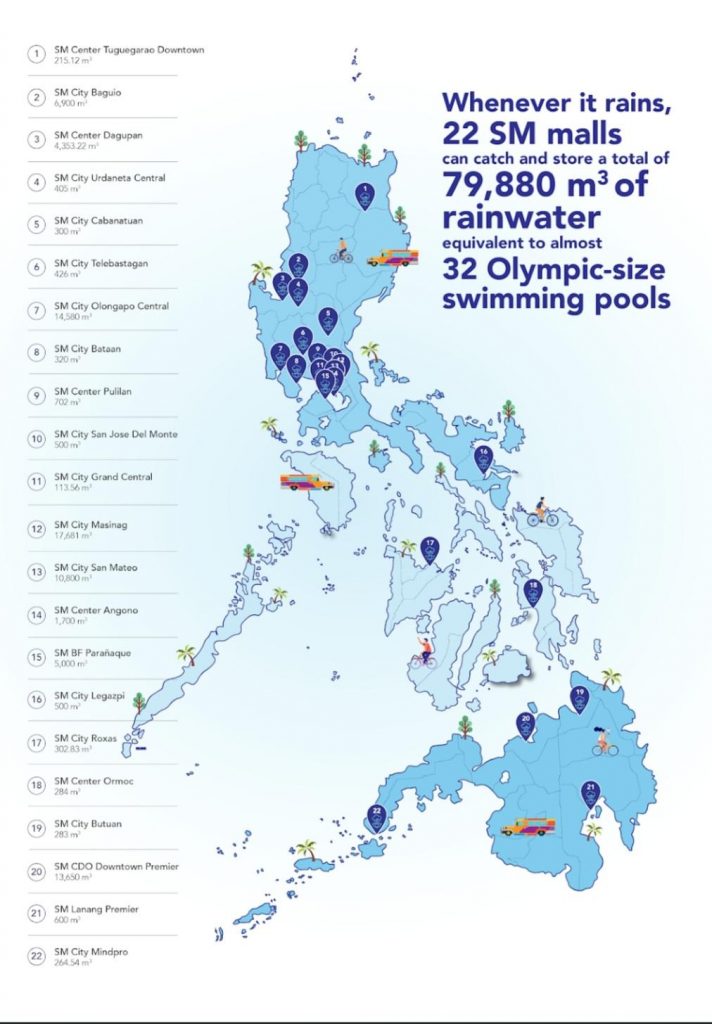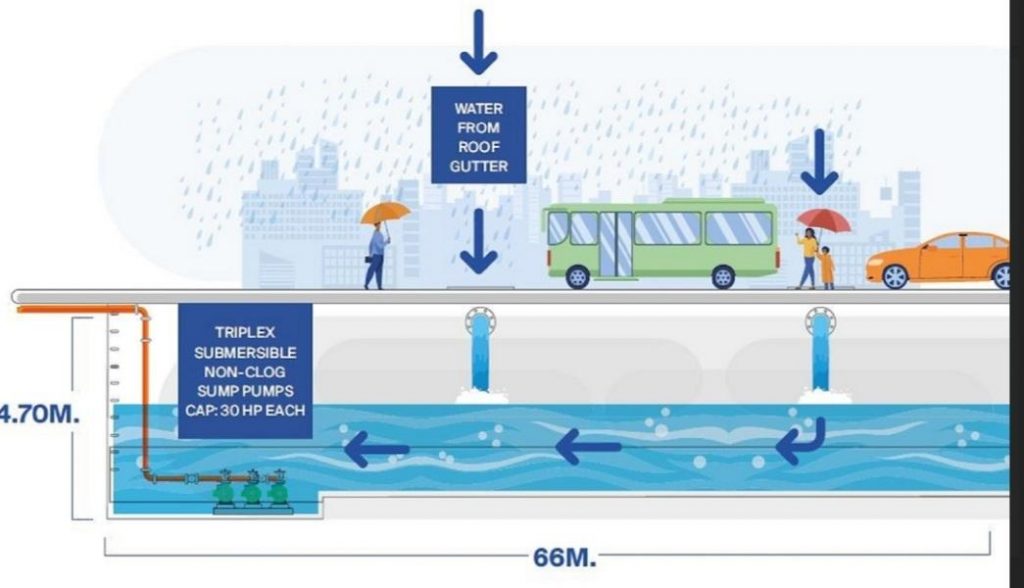
Floods and rising water levels caused by typhoons are a recurring problem in Marikina, which is considered one of Metro Manila’s low-lying districts. During typhoons, the water level of the Marikina River can surge to 23 meters, compared to its typical average of 13 meters. While the neighborhoods surrounding the Marikina Watershed are being submerged, SM Marikina remains tall, providing a safe haven for its neighbors.
What’s the secret? It is supported by 246 stilts.
SM City Marikina is a one-of-a-kind development. The elevated mall, which is built on top of 246 stilts and is located within the Marikina River Watershed, is a 6-hectare property.
“Understanding weather patterns and how they affect the environment where your city or building will be is a vital aspect of creating climate resilient structures,” said Architect Fides Garcia-Hsu, Vice President of SM Engineering Design and Development (SM EDD). “We evaluated the long-term flood cycles of the Marikina Watershed, which was recognized as a high-risk area by the World Bank in 1977, during the planning process of SM City Marikina.”

Building atop stilts can be traced back to ancient civilizations all across the world. The solution can be found in its extensive functionality. Early human tribes used elevated architecture to protect themselves from flooding, wetness, and surface creatures. It also allows them to store items in open spaces or participate in cultural activities. Finally, it lowers the expense of altering natural terrain. While modern architects have embraced the concept of building on stilts over the years, it has lost favor with the public as urbanization has progressed.
The practicality of ‘building on stilts’ was revived by SM, who reworked the concept as a climate-resistant feature. To assist limit the potential of damage during heavy flooding, this design was combined with additional disaster preparedness concerns. As a result, SM City Marikina was built 20 meters beyond than the allowed distance of 90 meters from the Marikina River’s centerline. Furthermore, the ground-floor parking was purposefully designed with no walls to enable water to flow, while the second story was elevated at 20.5 meters, which is higher than the highest recorded flood levels.
During super typhoons, SM Marikina’s resiliency saves an average of Php1 billion in terms of losses from business sales alone. This means that it is able to help its tenants, especially the micro, small and medium enterprises that depend on the mall for their business continuity and growth.
For its neighboring communities, SM Marikina also serves as a safe haven and a first responder to families who are affected during calamities. It also provides free parking spaces for those who are stranded and need a safe place to wait for flood water to recede.
“Our ultimate goal is to help build the resilience of our stakeholders. This begins by building our own resilience to serve as a good foundation they could rely on especially during calamities,” Garcia-Hsu said.

Beyond Marikina, construction on stilts may be reviving in other parts of the world as urbanization and the demand for greener spaces increase. This would allow for high-rise development while preserving much-needed green open space on the ground level.
While making SM City Marikina a disaster-resistant mall required an additional 15% in capital investments, the company sees it as a necessary investment in its goal to produce shared value for its stakeholders. This, combined with a science-based approach to climate scenario risk assessments, enables SM City Marikina to defy expectations and demonstrate that incorporating resiliency is the path to a climate resilient future.

No Comments